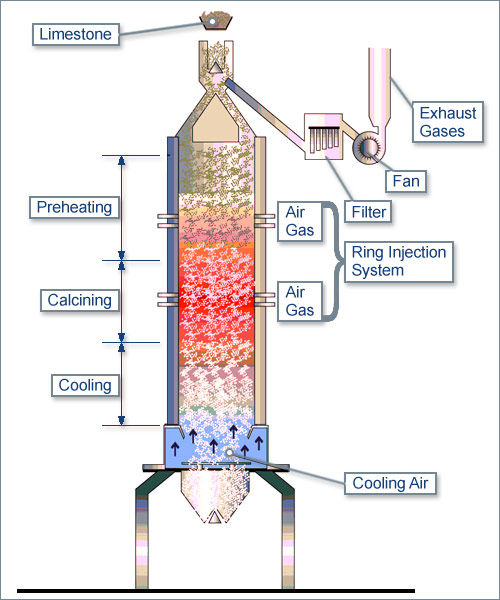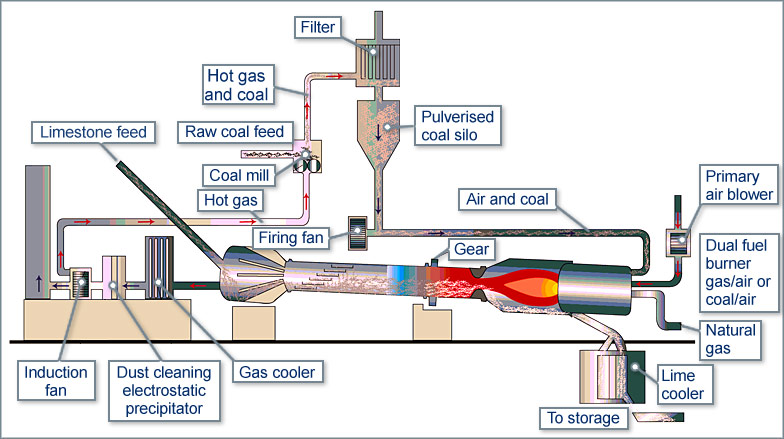
Shaft kilns can burn stone from a minimum of 20mm diameter up to 175mm. Some shaft kilns can be operated on natural gas, liquid and solid fuels. This type of kiln tends to produce medium reactivity quicklime, which can then be used in a number of industrial processes including the manufacture of iron and steel and aerated concrete blocks. Quicklime from shaft kilns is also processed into hydrated lime.

Rotary kilns consist of a rotating cylinder inclined at an angle of 3 to 4 degrees to the horizontal. Limestone, chalk or Dolomite is fed into the upper ‘back end’, and fuel plus combustion air is fired into the lower ‘front end’. The product is then discharged from the kiln into a cooler, where it is used to pre-heat the combustion air. Kilns of this type are usually fed with stone ranging in size from 15mm to 40mm and are fuelled by a range of fuels including coal, petroleum coke, natural gas and waste derived fuels. They are used to produce Dolomitic lime and higher purity quicklime, used for the manufacture of low-carbon steel, fibreglass and healthcare products. In particular, rotary kilns are also used to burn Dolomitic limestone at high temperatures to produce sintered Dolomite.



